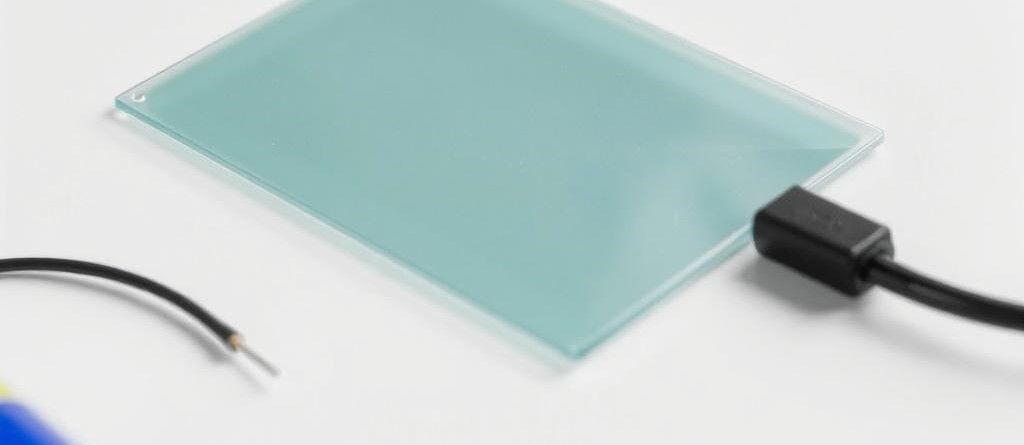Conductive Polymers Can Now be Invisibly Thin
Nanotechnology is now enabling invisibly thin polymers that conduct electricity with the efficiency of metals.

Imagine a material as thin as a whisper, completely transparent to the eye – yet able to conduct electricity with the efficiency of metals. This is not a vision of far-off science fiction, but a tangible development made possible with nanotechnology.
The breakthrough was made by nanomaterial specialists at La Trobe University in Australia and involves a near-invisible conductive polymer film which promises to transform the way we design and manufacture smart technologies, from touchscreens to biomedical sensors.
Why Conductive Polymers Needed a Rethink
Conductive polymers have long held promise as flexible, lightweight alternatives to traditional metals. Yet, in practice, their adoption has been limited. Conventional methods of fabrication often lead to films that are too thick, inconsistent, or opaque. In applications like transparent displays or wearable devices, these drawbacks are a major barrier.
The central problem has been in achieving three properties simultaneously: high conductivity, durability, and invisibility.

It is a challenge which the La Trobe team have tackled with an elegant approach: using hyaluronic acid – a biopolymer better known from skincare and medical applications – as a template for polymer growth. Instead of mixing the acid into the polymer solution, they tethered it directly onto a gold-plated substrate.
This subtle shift made a world of difference. It enabled the growth of an ultra-thin two-dimensional form of PEDOT (poly(3,4-ethylenedioxythiophene)), producing a film that is transparent, mechanically robust, and highly conductive. Most importantly, the process is reproducible – a critical factor for industrial adoption.
“Conductive polymers as we know them were developed nearly 50 years ago and although they’re exciting, they haven’t lived up to their potential in that time,” explains Associate Professor Wren Greene, the study’s lead researcher. “Often they are difficult to fabricate, as thin films don’t conduct electricity very well, aren’t transparent and can have highly variable properties.”
As Dr Saimon Moraes Silva, the Director of La Trobe's Biomedical and Environmental Sensor Technology (BEST) Research Centre, states, “I’m excited that we have created new capabilities for these materials which are scalable, affordable and reproducible.”
Related articles: Pioneering Polymer Nanostructuring for Real-World Innovation and Reinventing Wood with Nanotechnology
These comments reflect how modern polymer innovation is now quickly linking nanotechnology to industry. In this instance leading to these key developments:
· Invisibility: The polymer films are effectively undetectable to the naked eye.
· Conductivity: Performance on par with metals, a major advance over existing polymer coatings.
· Reproducibility: Uniform results with low variability, making scale-up realistic.
· Durability: Strong mechanical properties suitable for long-term device use.
The implications for the manufacturing sector are wide-ranging. For consumer electronics, transparent conducting polymers could reshape smartphone displays, flexible screens, and touch interfaces. The combination of invisibility and flexibility giving designers new freedom compared to rigid metal films like indium tin oxide.

In biomedicine, the story is equally compelling. Wearable monitors, implantable biosensors, and drug-delivery systems could all benefit from conductive films that are both biocompatible and reliable. The use of hyaluronic acid – itself naturally occurring in the human body – strengthens this link to healthcare applications.
Equally important is the practicality of the process. Hyaluronic acid is readily available, and the tethering method is straightforward. Unlike exotic nanomaterials, this technique aligns with industrial realities: reproducible fabrication at scale and compatibility with existing production lines.
“Through our method, called ‘tethered dopant templating’, we’ve created a robust way of making a conductive polymer that is flexible, durable, can conduct electricity as well as metals and is easily reproduced,” notes Greene. “So, it’s scalable.”
Complementary Pathways: Nanomodification of Polymer Surfaces
While templated growth provides one breakthrough route, another promising approach lies in nanomodification of polymer surfaces. By structuring a polymer’s surface at the nanoscale – for example through plasma treatment, laser nanopatterning, or the deposition of nanofillers – it is possible to tune conductivity, wettability, and optical transparency without changing the bulk polymer.
Concrete strategies already under study in Europe include:
· Plasma-treated PEDOT layers, where controlled oxidation and nanoscale roughness improve charge transport.
· Carbon nanotube (CNT) or graphene-modified polymer films, which add conductive networks to otherwise insulating surfaces while preserving transparency.
· Nanoimprinted polymer patterns, where periodic nanostructures enhance light transmission and carrier mobility – valuable for displays and photovoltaics.
Such methods align well with ongoing research into surface functionalisation and nanostructured coatings. For instance, plasma-modified polymers are already being explored in Brno and Prague for biosensing applications, while graphene-polymer hybrids are part of Horizon Europe consortia on advanced electronics. In practice, nanomodification and templated growth could be combined, offering manufacturers a flexible toolbox for next-generation devices.
By solving the longstanding trade-off between transparency, conductivity, and durability, the La Trobe innovation offers a clear path towards smarter, lighter, and more versatile devices. For industries in Europe and beyond, it signals a future where polymers, not metals, may form the invisible backbone of our everyday technology.
Photo credit: DC Studio on Freepik, Gencraft, & Gencraft

